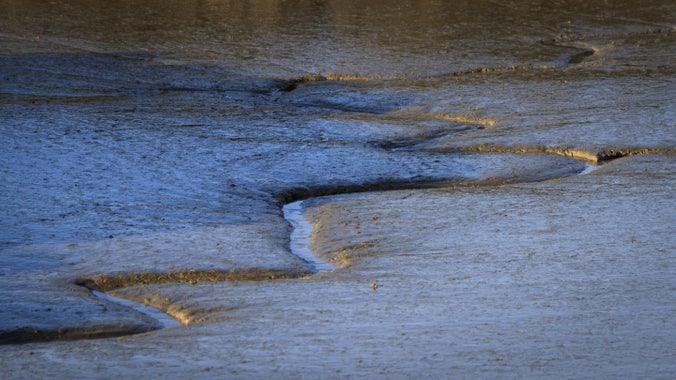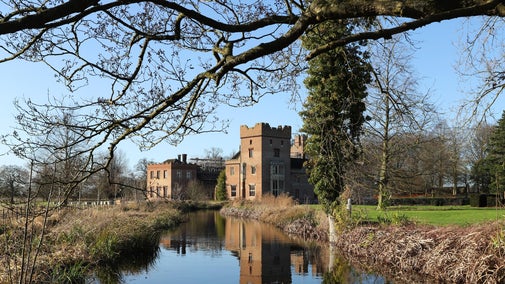1991
Pioneering a new technique
In 1991 the first managed realignment in England was carried out at Northey Island. Moving the embankment further inland created 1 hectare of new saltmarsh.

We’ve started work on a major conservation project at Northey Island to protect, strengthen and enhance the vital saltmarsh habitat in the Blackwater Estuary over the next century. Discover how we’re working in partnership with the RSPB with funding from the EU Life programme to combat the effects of climate change and rising sea levels to help preserve this precious place.
Northey Island has been at the forefront of coastal adaptation for more than 30 years. This year we reached a peak of our work on the island in our fight against climate change and rising sea level.
We ask for your permission before anything is loaded, as this content may introduce additional cookies. You may want to read the Google YouTube terms of service and privacy policy before accepting.
Northey Island is an internationally important place. Its saltmarsh, mudflats and grassland make it ideal for a variety of specialist plants, invertebrates and birds.
But the saltmarsh at Northey Island is far smaller than it used to be, as it’s eroding on the outer edges due to the action of the waves and stronger tidal flows. These effects are caused by rising sea levels and climate change. The inner parts of the saltmarsh are also being eroded along creek margins as salty water flows over and through them.
As a result of this, the saltmarsh habitat is changing. Some of the plant species usually found at lower saltmarsh elevations are dying out because the areas where they live are now more frequently under water. These plants are creeping further up the saltmarsh, encroaching on the higher saltmarsh plants.
However, the species higher up have no space to migrate to. Stuck between the rising tides and the fixed coastal flood defences, they’re being eliminated by a process known as ‘coastal squeeze’. This has led to the loss of many hectares of saltmarsh in the Blackwater Estuary and across much of south-eastern England. If we don't take action now, almost all the saltmarsh will be lost.

To mitigate the effects of climate change and rising sea levels, we've developed the Coastal Adaptation Strategy.
The work we do now will help to protect, strengthen and enhance this precious saltmarsh habitat in the Blackwater Estuary over the next 100 years. We’re using a range of approaches to achieve this, including:
Every year, large tides are overtopping (flowing over) the flood defences at the south and south-east of Northey Island. All the defences around Northey Island are in a poor condition. If they fail in an uncontrolled way, this will lead to erosion and further loss of habitat. It could also limit the way vegetation can become established, reducing the diversity of species compared to a managed situation.
To tackle this, we’re using a technique called managed realignment. This involves removing parts of the flood bank to give space for the rising sea level. It also allows the saltmarsh plants to migrate inland in a natural way as the sea level rises, giving it a longer lifespan and better biodiversity.
We first implemented this plan at the south-east corner of Northey Island in 1991 and it has led to a healthy ecosystem that has existed for 30 years. Over 5,000 hectares of intertidal area has since been created across England using this technique. Since 2019 we’ve implemented two further managed realignments at Northey Island, creating 5ha of new saltmarsh in the immediate term.

Work on the north-west side of the island has involved a different management technique. Here we have reused sediment that had been previously dredged to maintain the navigation for boats and barges to Maldon. Carefully placing the sediment avoids new channels being formed through the saltmarsh east to west and reduces the higher flows that have been causing further erosion and vegetation loss.
This technique modifies the flows within the saltmarsh itself. It takes some of the energy out of the tide so that sediment can naturally be deposited there. This in turn allows the health of the saltmarsh to improve, which then helps reduce the effects of wave action over the saltmarsh surface. To date we have regenerated a hectare of saltmarsh vegetation on what had been eroding, bare clay.
Following the success of this technique we now have works planned for three more sites around Northey. These include restoring and protecting saltmarsh on the Western Shore and causeway saltmarsh and creating a nesting bird island on the eastern side of Northey. This will creating a remote nesting habitat but also take energy out of the tides rushing into saltmarsh of Northey, protecting it from further erosion.
The new areas of marsh created through the placement of sediment sit higher than the existing saltmarsh and regenerate naturally with saltmarsh plants. This improves the diversity of the saltmarsh and provides a niche area for some of the rarer saltmarsh species that are under immediate threat from coastal squeeze. We’ve seen plants establish within only a few months of placement.

We don’t need to remove all the flood defences that exist. It's also not desirable for nature conservation. But where we do decide to keep embankments in place, we need to make sure they can cope with the higher tidal levels predicted over the next century to avoid any sudden and catastrophic failures and further loss of saltmarsh. To do this, we can use a technique known as reprofiling.
On the north-east embankment at Northey Island, we have reduced the risk of the embankments breaching when flood waters come over the top. Breaching often happens from the landward side as the water floods over the bank and rushes down the relatively steep slope on the back face of the bank.
Once breached in this unmanaged way, deep scour holes form at the site of the breach and the surrounding saltmarsh is rapidly eroded. By making the back slope of the remaining north-east embankment shallower in profile, we have reduced the risk of this happening.
The flood water can then be released back to the estuary in a controlled way through sluice pipes, avoiding loss of habitat there. In this way, the freshwater and slightly salty (brackish) habitats that exist in ditches, ponds and areas of terrestrial grazing marsh on the land can recover and survive into the future.
1991
In 1991 the first managed realignment in England was carried out at Northey Island. Moving the embankment further inland created 1 hectare of new saltmarsh.
The work at Northey Island was part-funded under EU LIFE on the Edge. Other funding has come from National Trust Neptune Funds, Delia’s Fund, National Highways Environment and Well-Being Designated Funds, Defra’s Natural Flood Management Scheme and the Association of National Trust Members and Supporters in Belgium.

Everyone needs nature, now more than ever. Donate today and you could help people and nature to thrive at the places we care for.

The Royal Society for the Protection of Birds is a charitable organisation registered in England and Wales and in Scotland.

LIFE on the Edge is a 4-year LIFE Nature project lead by the RSPB with the National Trust with the aim to improve the condition of the target coastal sites while also building their long-term resilience and informing future work elsewhere.

Allocations of flood management funding to allow homes, businesses and communities around the country to benefit from increased flood protection.
Learn about the unique saltmarsh habitat at Northey Island and how it plays a vital role in biodiversity, reduces the risk of flooding and mitigates the effects of climate change.

Plan your visit to Northey Island, and discover what you can see and do while you're there.

We believe that nature, beauty and history are for everyone. That’s why we’re supporting wildlife, protecting historic sites and more. Find out about our work.

Find out more about the funding the National Trust receives from grants, and the projects it has helped support.
